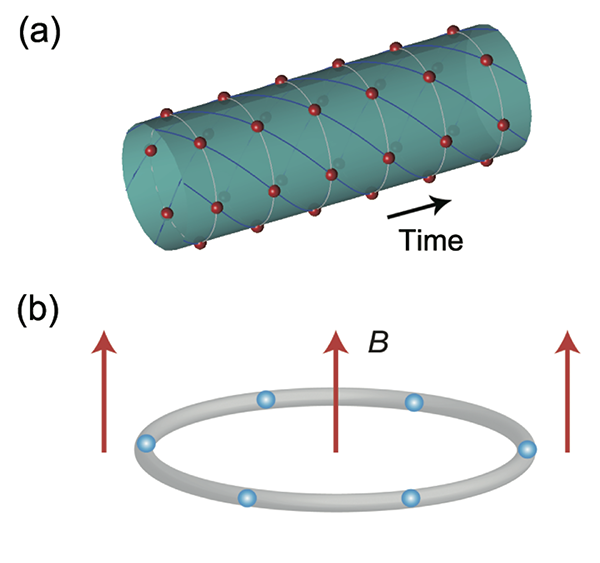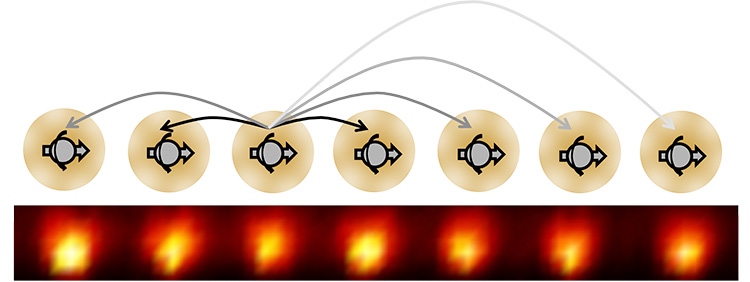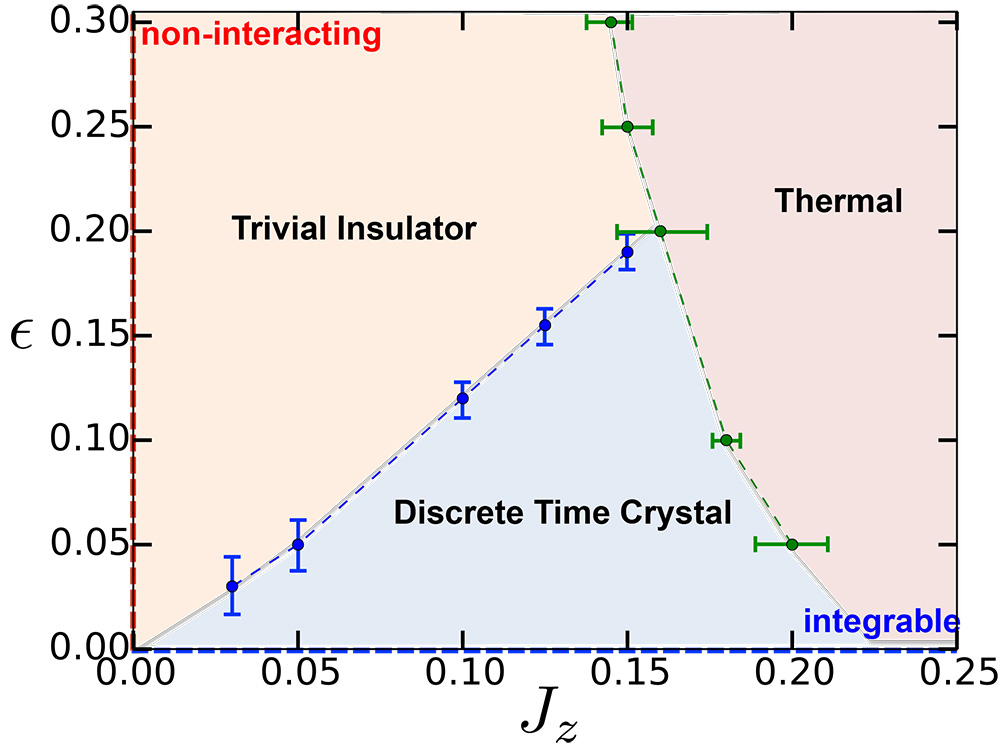Scientists have confirmed the existence of "time crystals" - the phase state of matter with a violation of time symmetry

The structure of the crystal of time is periodically repeated not only in space, but also in time. For example, a ring of cooled atoms in a weak magnetic field.
So, this is no longer empty talk and no bare theory. Last week, in the authoritative journal Physical Review Letters, a scientific article was published by the senior lecturer (assistant professor) of physics at the University of California at Berkeley, Norman Yao and his colleagues, in which he presents a scheme for creating a time crystal and a method for registering conditions characteristic of new form of matter.
Now a bridge has been built between theory and reality - everyone can repeat the experiment on the creation of time crystals, and this theory of the Nobel laureate Wilchek can be considered confirmed experimentally.
In 2012, the outstanding physicist Frank Wilchek put forward the hypothesis of "time crystals" . It becomes clear if one imagines the existence of a crystal in spacetime a little differently than is customary. It is usually accepted to consider the crystal lattice in space, but Frank Vilchek suggested looking at it also in time.
If you look at the atoms of the crystal lattice in this way, then some internal energy oscillations occur in a stable external crystal. Wilczek’s calculations showed that atoms can form a constantly repeating lattice in time, returning to their original position after different time intervals, thereby breaking the time symmetry. It turns out that without energy consumption or production, temporary crystals will be in the “ground state”, but cyclically change the structure, which from the point of view of physics is defined as perpetual motion.
In September 2016, Chris Monroe created the first time crystal in the laboratory of the University of Maryland at College Park.. His idea was to create a quantum system in the form of a group of ions arranged in a ring. When the ring is cooled, the energy state of the system will drop to the minimum level, that is, the “ground state”. Chris Monroe took the ytterbium ions to create the “ground state” of the ring. He used quantum interactions to force the ytterbium ions to enter the ground state, and then fix the time symmetry violation. Scientific work posted on arXiv.org .
After the Monroe group, a successful experiment with the creation of time crystals was conducted by colleagues from Harvard University (lead author of the study is Mikhail Lukin, a Harvard employee) using a completely different experimental setup with tightly packed nitrogen-vacancy centers in diamonds. They toopublished their results on arXiv.org . Norman Yao, a representative of the Department of Physics at the University of California at Berkeley, took part in the Harvard work.
Norman Yao at the same time worked closely with the research teams of Monroe and Lukin, which allowed him to study in detail the main basic properties of time crystals.
Time crystals periodically repeat their structure, because they periodically receive energy from the outside. According to Yao, a senior lecturer, this can be compared to the movement of a jelly cube, which was given a finger click. Having received an external energy impact, time crystals demonstrate extremely interesting behavior, which makes them a new phase state of matter. This is a wide class of materials that are not naturally balanced .

“This is a new phase state of matter, definitely,” says Norman Yao. - but it is really cool, because it is one of the first examples of a non-equilibrium substance. Over the past half century, we have investigated an equilibrium substance, as in metals and dielectrics. We are just now beginning to study a whole new world of non-equilibrium substance. ”
Norman Yao himself hardly presents where it is possible to use time crystals in practice. Other researchers suggest that non-equilibrium materials with cyclical repetition of the structure over time may become almost ideal storage devices and will find application in quantum computers.

Changing the experimental parameters can easily melt the crystal of time to the state of a trivial dielectric or heat it.Illustration: Norman Yao
In the just-published scientific work of Norman Yao, a scheme for creating a ring of 10 ytterbium ions is described, in which the electron spins interact with each other, like qubits in quantum computers. In order to bring the ions out of equilibrium, they are irradiated with a laser pulse to create a weak magnetic field, and the second laser partially spins the spins of the atoms, repeatedly repeating this effect. As the spins interact with each other, the atoms go into a repeatable pattern of interactions that determines the structure of the crystal. Such a scheme was used during the above experiment at the University of Maryland.
In a time crystal, electrons form in time a crystal that does not correspond to the symmetry of atoms fixed in space. That is what determines its unique properties.

Crystal Time University of Maryland. Illustration: APS / Alan Stonebraker / Phil Richerme.
Another unusual feature of this phase state is the response to interaction with an interval that exceeds the interaction interval. That is, the material is irradiated with a laser with an interval of T, and the material reacts with an interval of 2T. This is an extremely strange property, which is absent in ordinary materials. Imagine a jelly cube, which begins to fluctuate only with a second click.
In the experiments of the group of Mikhail Lukin with a completely different experimental setup, the same phenomenon of the breaking of time symmetry was observed - this proves that the crystal of time is indeed a kind of new phase state of matter.
The scientific article was published on January 18, 2017 in the journal Physical Review Letters (doi: 10.1103 / PhysRevLett.118.030401).
